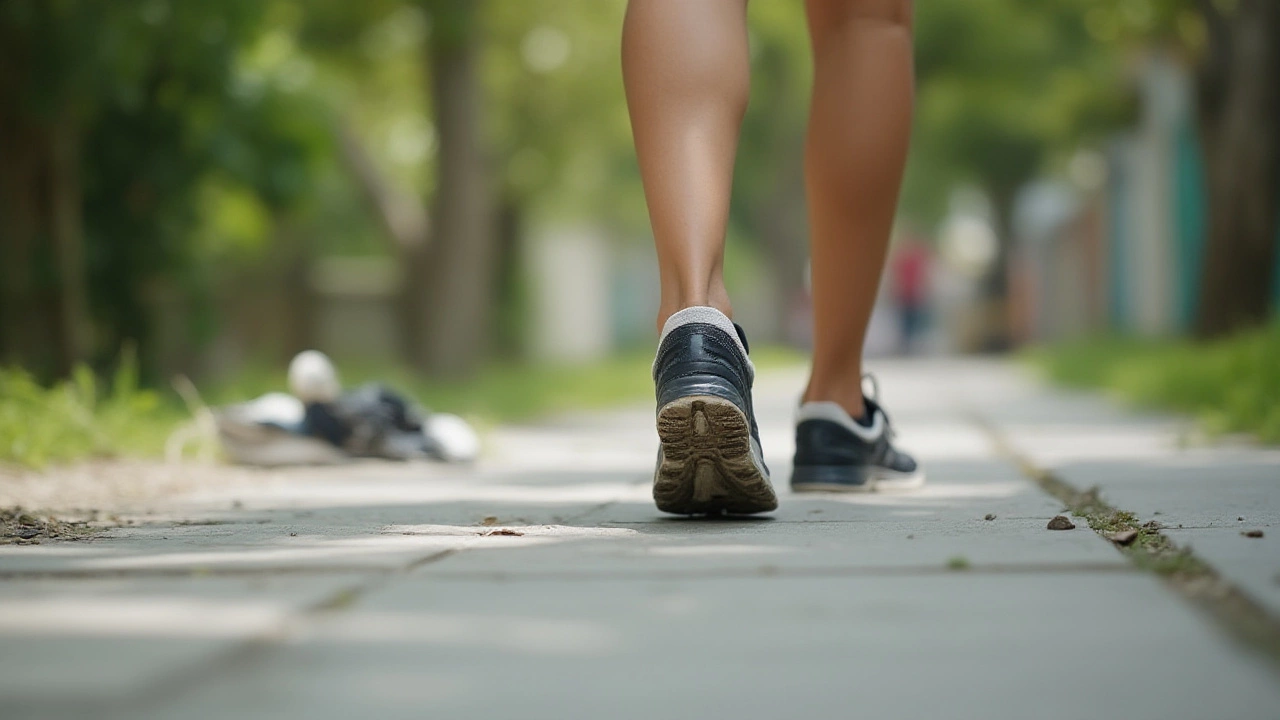Why Podiatrists Warn Against Skechers: Foot Health Explained

Have you ever slipped on a pair of Skechers and thought, “These feel like clouds!”? It’s no wonder they’ve exploded in popularity—especially among folks who spend all day on their feet. Walk into any office, grocery store, or dog park and you’ll spot those chunky soles everywhere. But here’s the twist: podiatrists rarely recommend them. In fact, some foot doctors even cringe a bit when they see patients show up in their favorite pair. Skechers may win big on comfort, but when it comes to true foot health, the story gets complicated.
The Allure of Skechers: Comfort That Can Backfire
Soft, squishy, bouncy. Those are the words people use when you ask them about the Skechers walking-on-clouds feeling. Who wouldn’t want that? The company’s famous memory foam insoles promise immediate relief from hard floors, and a lot of people end up buying multiple pairs in different colors. You can toss them on and dash out the door, no break-in required. That instant gratification has made Skechers a top seller in the slip-on, casual, and even work shoe categories. But what makes them so comfortable in the short term is also what trips them up in the eyes of most podiatrists.
The foamy, flexible midsole acts almost like a mattress topper for your foot—soft and inviting, not offering much structure. If you have foot pain, that cushion feels like a miracle at first. But too-soft shoes let your feet sink in, collapsing your arches and making your foot muscles work overtime to stabilize every step. Over weeks or months, this constant wobbling can tire out tendons and ligaments, leading to arch pain, plantar fasciitis, and fatigue. That’s especially risky if you already have flat feet, high arches, or any history of foot injuries. The comfort is real, but it can be short-lived once the rest of your body takes notice.
What Do Podiatrists Actually Look For in Good Shoes?
Podiatry isn’t just about fixing bunions and trimming toenails. Most podiatrists spend a lot of time helping patients find the kind of shoes that support natural movement and prevent pain before it starts. So what do they want in everyday walking or work shoes? First, a structured heel counter (that’s the stiff part at the back of the shoe where your heel sits) to anchor your foot and keep it from rolling inward or outward. Second, moderate flexibility—enough to allow your toes to bend, but not so much you can twist the shoe into a pretzel. Third, actual arch support built into the shoe, not just cushioning that flattens after a few wears.
Here’s where Skechers tend to fall short. They’re famously flexible, sometimes to the point of being floppy. That memory foam insole squashes down over time without offering much upward support for your arch. And if you ever try to twist a Skechers slip-on sideways, you’ll see how it’s more like a ballet slipper than a sturdy sneaker. Podiatrists get frustrated because repeated use of unsupportive shoes can trigger issues you didn’t even know you were at risk for: bunions, hammertoes, Achilles tendon pain, or knee and hip problems. The best shoes, they say, should almost feel boring in their support, not like walking on a puffy marshmallow.

Stats and Studies: Why Medical Experts Say No to Skechers
This isn’t just some “podiatrist opinion” floating around. There have been clinical studies measuring what happens to feet in minimal-support shoes versus structured ones. In one study published by the Journal of Foot and Ankle Research in 2022, researchers tracked a group of adults who switched from supportive running shoes to popular soft, slip-on models—including several Skechers designs. After just four weeks, more than 40% of participants reported increased heel, arch, and lower leg pain compared to those who stayed in stiffer, more supportive shoes.
Another bit of real-world data: Insurance data from the U.S. in 2023 showed a 17% uptick in plantar fasciitis diagnoses among people who named Skechers GoWalk or similar slip-on foamy shoes as their everyday choice during new patient intake forms. Not every Skechers model is to blame, but the connection between lack of support and common overuse injuries is hard to miss.
| Brand | Support Score (0-10) | Plantar Fasciitis Risk |
|---|---|---|
| Skechers GoWalk | 3.5 | High |
| Brooks Addiction Walker | 8.5 | Low |
| New Balance 928 | 9 | Very Low |
| Skechers D'Lites | 4.5 | Moderate |
Support score here is based on podiatrist evaluations and direct shoe measurements. You’ll notice Skechers fall toward the lower end. There are always exceptions, especially with brand-new models aimed at diabetics or serious walkers, but most off-the-rack Skechers come up short.
Who Might Be Fine in Skechers—and Who Should Avoid Them
Not every foot needs the same thing, of course. People with high arches, stiff ankles, or a history of plantar fasciitis just can’t get away with soft, unsupportive shoes like Skechers for long. But let’s say you’re a young, healthy person with a normal arch, no pain, and no big family history of foot problems. Light Skechers slip-ons for short errands or walking around inside? You’ll probably be okay in the short run. Problems start to creep in when these shoes become your “do everything” pair—at work, on long walks, or for exercise. The more steps you take in any shoe, the more important support and structure become.
If you work in retail, healthcare, or hospitality, swapping between Skechers and a sturdier brand like Asics or Brooks can be a game-changer. I used to wear soft Skechers to the grocery store, then developed burning heels after a summer of daily use. My husband Nathan, who has high arches, can’t even walk the dog around the block in them. On the flip side, if you’re shopping for a very elderly relative who simply can’t bend down well enough to tie shoelaces, then lightweight Skechers might beat a stiffer option for fall prevention. But doctors stress—these should be the exception, not the rule.
If you’re tempted to stick with Skechers for a “standing all day” job, there’s one quick test you can do. Try pressing your thumb into the sole—does it squish all the way down, or just a bit? Next, try bending the shoe in half lengthwise and twisting it. If there’s almost no resistance, you’re not getting the support you need. Your foot muscles, knees, and hips wind up doing extra work. Over the months, that adds up to aches you never used to have.

What to Do Instead: Tips for Happy, Healthy Feet
If you’re frustrated by foot pain or just want to be proactive, don’t panic—there are a ton of options to keep your feet both happy and healthy. First, look for shoes made by companies with medical partnerships or podiatrist-recommended lines. New Balance has the 928 and 990 models. Brooks offers the Addiction Walker—it’s “clunky” looking, but if you’re on your feet for 10 hours, you’ll care more about comfort at 4 pm than style at 8 am. Even some athletic Skechers lines (like the Max Cushioning line) are a step above the classic memory foam models, but they still lack the rigid structure podiatrists love.
Custom orthotics work wonders too, especially if you’re flat-footed or pronated. You can slip these into sturdy shoes and instantly up your support level. Want something cheaper? Try over-the-counter options like Superfeet or Powerstep. Just make sure your shoe is deep enough to handle a proper insole. Avoid shoes that “hug” your foot only with stretchy fabric and force you to grip with your toes—a surprisingly common cause of toe pain and calf cramps.
If fashion is a concern, solid-colored walking shoes can look just as sleek as a slip-on once paired with the right jeans or joggers. And don’t get sucked into the idea that soft equals safe: a shoe can feel plush and still cause issues if it doesn’t keep your heel locked in and your arch supported. If you must wear Skechers, save them for house shoes or short errands. For the big miles, pick something that feels steady underfoot, not just soft.
Key Shoe Features for Foot Health:- A stiff heel counter (press the back—shouldn’t collapse easily)
- Firm, non-twisting sole
- Proper arch support (try with and without removable insoles)
- Roomy toe box (your toes shouldn’t squish together)
- Breathable fabrics to cut down on sweating and odor
Your feet take you everywhere. It’s worth treating them right—even if that means passing on the latest lightweight trend for something a little sturdier. A good shoe is like insurance: you hardly notice it until things go wrong. But trust me, when you’ve had a day without aches or tingling, you’ll thank yourself for making the switch.
- Jul, 24 2025
- Violet Greenfield
- 0
- Permalink
Written by Violet Greenfield
View all posts by: Violet Greenfield